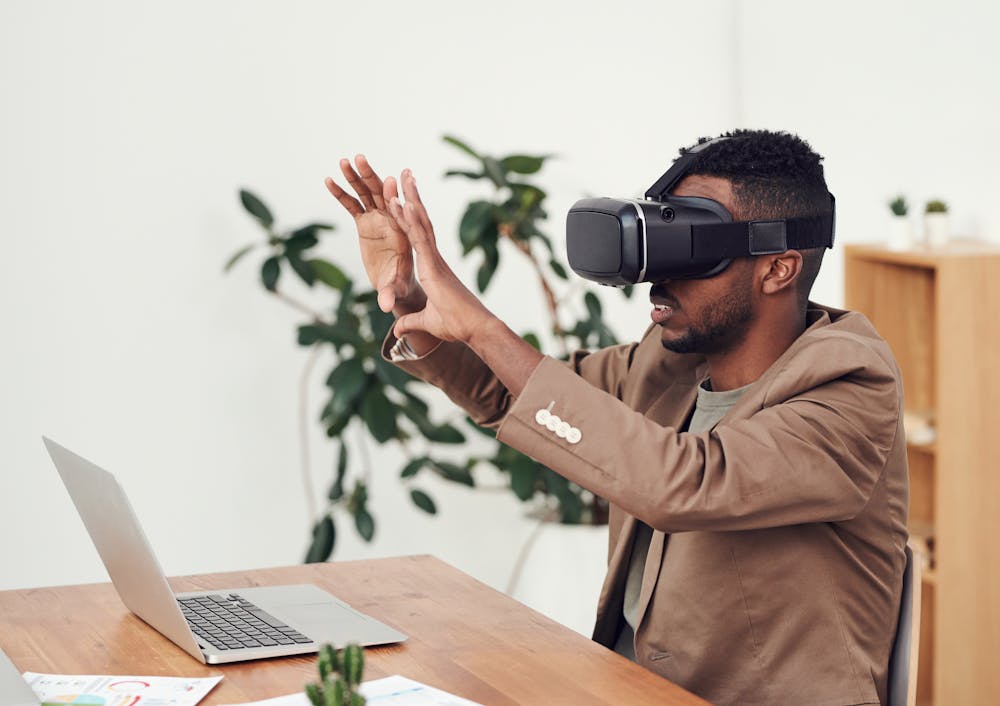Augmented Reality (AR) is changing the way many industries operate, and the fencing industry is no exception. For years, cost estimation for fencing projects involved time-consuming site visits, manual measurements, and reliance on paper plans that could easily be misinterpreted. But with AR, everything from measuring to material estimation is being transformed, bringing significant improvements to how contractors and clients approach fencing projects. It’s making the whole process faster, more accurate, and much more interactive, which is a game-changer for an industry that thrives on precision and efficiency.
What is Augmented Reality, and How Does It Work in Fencing?
At its core, Augmented Reality is a technology that blends digital content with the physical world. In fencing, this means that instead of relying on pencil-and-paper sketches or walking around with a tape measure, AR allows contractors to visualize and interact with virtual fence designs overlaid onto the real environment in front of them. Using devices like smartphones, tablets, or AR glasses, contractors can get a much clearer sense of how a fence will look in a given space without needing to build it first.
For example, contractors can use AR to show clients exactly how a fence will fit in their yard—what it will look like, how it will impact the landscape, and how different materials or heights affect the overall aesthetic. By integrating this technology into cost estimation, the whole process becomes a lot smoother, more accurate, and collaborative.
Real-Time and Accurate Measurements
A key part of any fencing project is accurate measurements. In the past, contractors would have to take measurements manually and then calculate the amount of materials needed. It was easy to miss details or get the calculations wrong, and that could lead to over-ordering or running out of materials midway through installation, both of which can be costly and time-consuming.
With AR, however, the whole measurement process becomes much more efficient. Instead of physically walking around the property with a measuring tape, AR tools allow contractors to take precise, real-time measurements directly through their device. These measurements are accurate and instantaneous, reducing the risk of human error and ensuring that the cost estimate is based on actual dimensions of the site, not approximations. Whether it’s measuring the total length of the perimeter or calculating the area of a site that may include irregular terrain, AR provides clarity and helps eliminate mistakes before the project even starts.
Moreover, AR can instantly calculate the material requirements once the measurements are taken. It can tell you how many posts, how much fencing material, and how many gates are needed for the job. This all happens in real-time, which means contractors can move forward with confidence knowing they’ve got an accurate estimate.
Better Design Visualization
One of the trickiest parts of the fencing industry is helping clients visualize how a fence will look once it’s installed. Before AR, contractors would show clients sketches or 2D drawings, which often left a lot to the imagination. This could result in misunderstandings or confusion, especially when it came to choosing between materials or designs.
With AR, clients can see exactly what their new fence will look like in the real world, right in front of them. Through a tablet or smartphone, contractors can superimpose a virtual fence over the client’s yard, giving them an up-close look at how different materials (wood, vinyl, chain link, etc.) will look on their property. Not only does this help clients make better decisions about design, but it also allows them to see how the fence fits in with the existing landscape—something traditional drawings could never quite convey.
By being able to view potential fence designs in situ, clients can quickly see the pros and cons of each option. And as they make adjustments to the design, AR can update in real-time, helping them understand how changes in height, material, or layout impact both the look and the cost of the project. For contractors, this means fewer back-and-forth revisions and more certainty about what the client wants before moving forward with a price estimate.
Material and Cost Estimation
Material estimation has always been a labor-intensive task. Contractors have had to figure out how much of each material is needed based on the measurements and design they’ve created. This could be done by hand, which often resulted in a lot of guesswork, or it could involve specialized cost estimating software that needed manual input.
AR technology simplifies this process by calculating the materials required as soon as the measurements and design are in place. With a simple scan of the site, AR tools can automatically suggest the right quantities of fencing materials, including posts, panels, gates, and even bolts or fasteners. It can also take into account any specific factors—like terrain or obstacles—that might require different materials or additional time for installation.
This automated estimation helps contractors give clients more accurate pricing up front. Instead of having to recheck numbers multiple times or wait for complicated software to spit out a number, AR offers immediate calculations. Contractors also benefit from knowing exactly what to order, which can help avoid delays in sourcing materials. They no longer need to worry about over-ordering or under-ordering because the estimates are based on actual data, not rough guesses.
Streamlining the Process and Reducing Costs
AR doesn’t just make things easier for contractors in terms of design and materials—it also saves time and reduces costs. In the past, cost estimation involved several stages: visiting the site, taking measurements, creating designs, calculating materials, and then preparing the final estimate. AR reduces the amount of time spent on each of these steps. It streamlines the entire process, enabling contractors to provide estimates faster and more accurately, often on the same day as a site visit.
For contractors, this not only boosts efficiency but also increases profitability. Since AR makes it easier to get things right the first time, there’s less need for costly revisions or rework. And for clients, the quick turnaround and accurate pricing make for a smoother, more transparent experience, which builds trust between both parties.
Improving Client Engagement
Perhaps one of the most valuable aspects of AR in the fencing industry is its ability to engage clients in the process. In the past, clients were often at the mercy of the contractor’s expertise when it came to choosing the right fence or understanding the costs involved. AR flips that dynamic. By allowing clients to directly interact with virtual fence models, adjust designs, and see real-time updates on how these changes impact costs, the entire process becomes much more collaborative.
This fosters greater trust and transparency, as clients can see exactly what they’re paying for, how their choices affect the final product, and what the end result will look like. In an industry where client satisfaction is key, providing a more interactive and informative experience through AR is an easy way to build positive relationships and improve outcomes.
Augmented Reality is having a profound impact on cost estimation in the fencing industry. It makes everything from measuring and material estimation to design and client communication more accurate, efficient, and engaging. With AR, contractors can offer more precise estimates, provide quicker turnaround times, and deliver a higher level of service to clients. As this technology continues to evolve, the fencing industry will only see more benefits, with smoother workflows, fewer mistakes, and a more streamlined experience for everyone involved.


